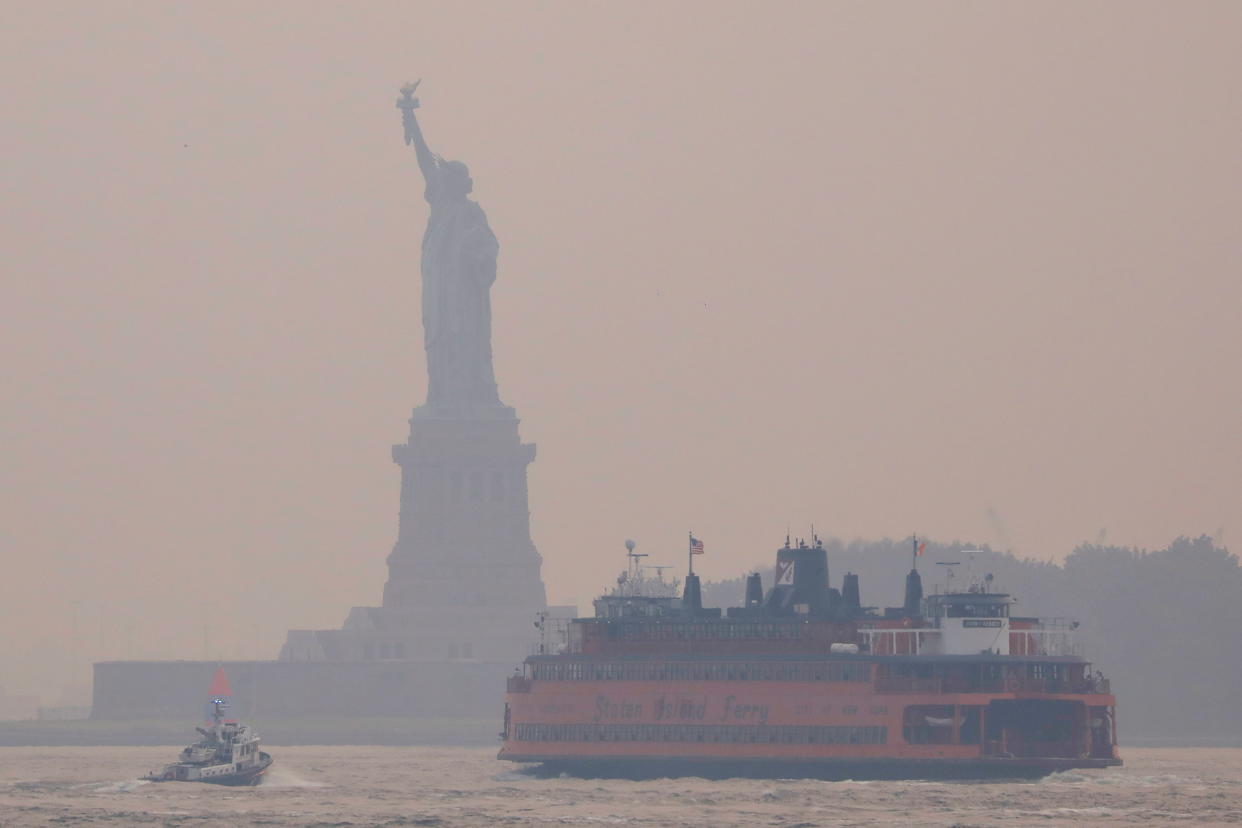Western wildfire smoke blankets New York with unhealthy air as climate change impacts continue to multiply
Smoke from multiple wildfires in the Western United States continued to shroud New York City for a second day on Wednesday, creating hazy red-orange skies and resulting in unhealthy air quality.
Smoke from 78 large fires burning across 13 Western states traveled 3,000 miles east, blanketing cities in smog, with conditions similar to NYC's being reported in Washington, D.C.; Baltimore; Philadelphia; and Boston.
Smoke and haze from the wildfires in the western U.S. can be seen drifting southeast across the Tri-State area in this satellite imagery. This will filter the sunshine here throughout the day today. pic.twitter.com/LfSay79IQy
— NWS New York NY (@NWSNewYorkNY) July 20, 2021
In New York City, the air quality index (AQI) reached its worst level of 2021 on Tuesday, hitting 165, which is deemed “unhealthy.” That reading meant the city briefly had the worst air quality in the world, surpassing cities such as Lima, Peru, and Delhi, India. A “good” AQI, by comparison, falls into the 0-to-50 range.
New York state officials released an air quality advisory on Tuesday, warning residents of fine particulate matter in the air, thanks to pollutants generated by fires. These advisories are issued only when meteorologists predict an air quality index that exceeds 100, when the act of breathing can threaten a person’s health.
According to officials, exposure to the pollutants can cause short-term health effects such as “irritation to the eyes, nose, and throat, coughing, sneezing, runny nose, and shortness of breath.” People with heart or breathing problems, children and the elderly are at higher risk.

Thanks to extreme drought conditions exacerbated by climate change, the West Coast has seen an earlier and more extreme start to its wildfire season this year. The largest active wildfire is Southern Oregon’s Bootleg Fire, which broke out on July 6 and has burned more than half the size of Rhode Island.
“The fire season in California and across the West is starting earlier and ending later each year. Climate change is considered a key driver of this trend,” according to the website of the California Department of Forestry and Fire Protection (Cal Fire).
Jacob Bendix, a Syracuse University professor, emphasized the role climate change plays in the wildfires.
“The exceptional fire weather this year and in recent years does not represent random bad luck,” he told the Los Angeles Times. “It is among the results of our adding carbon to the atmosphere — results that were predictable, and indeed that have been predicted for decades.”

California wildfires have burned five times the land acreage this year than in the same period last year, according to Cal Fire, putting the state on track to face its worst fire season ever.
The National Weather Service in New York predicts that an advancing cold front on the East Coast later Wednesday will bring thunderstorms that will help clear the skies of the smog in New York. However, as the West continues to battle its soaring temperatures, severe droughts and growing wildfires, the hazy skies covering the East Coast may make a recurring appearance.
____
Read more from Yahoo News:


